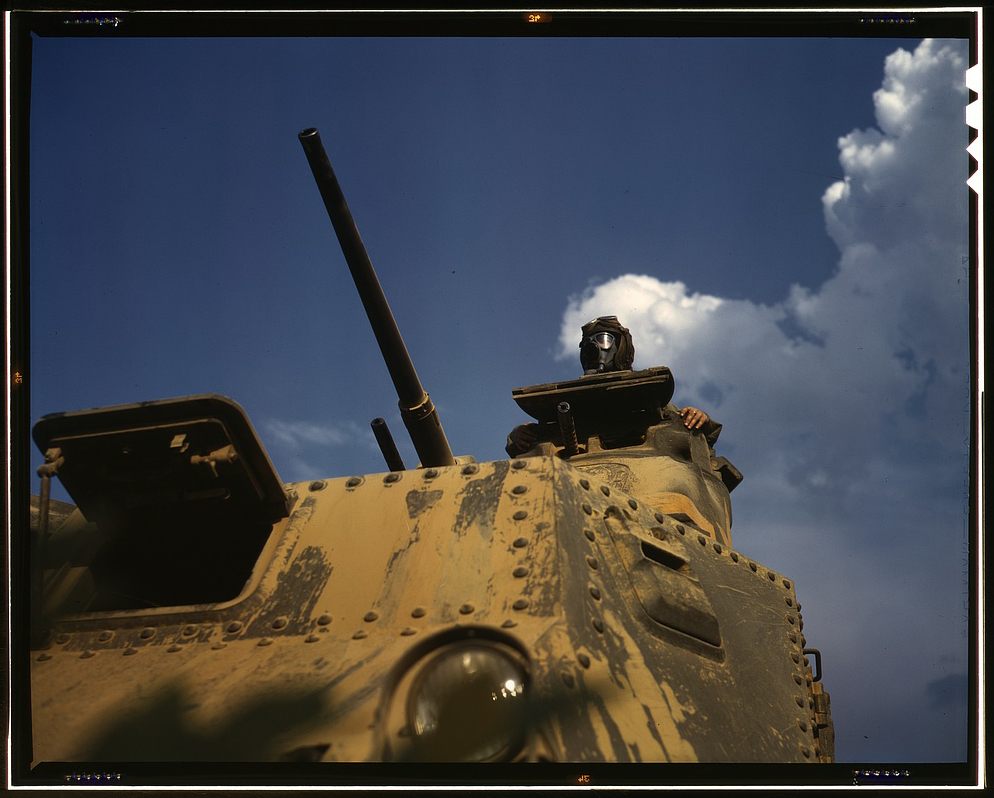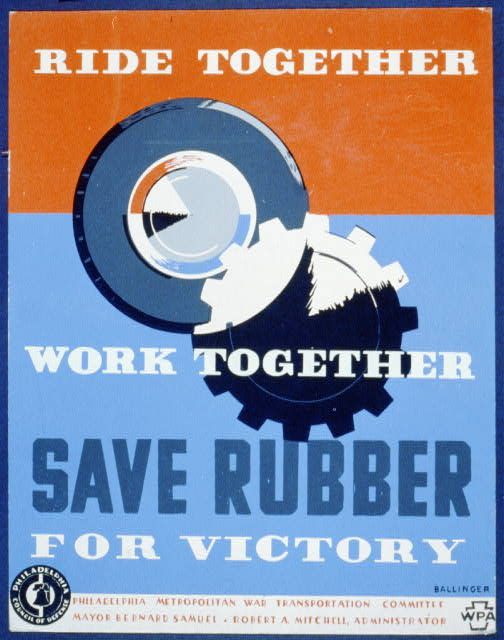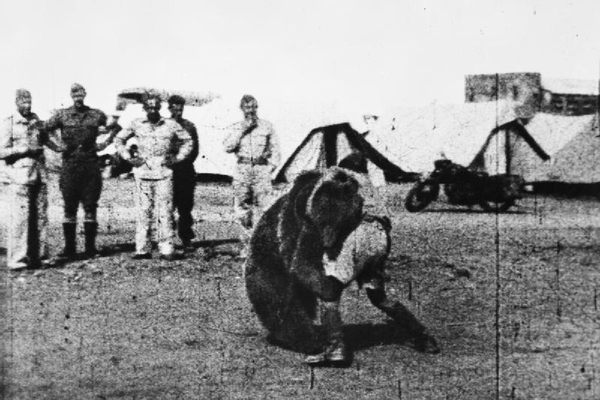How U.S. Taxpayers Secretly Funded the Country’s First Modern Stink Bombs
American spies in WWII worked hard to formulate a smell to remember.

A tank commander in training, 1942. (Photo: Library of Congress/LC-DIG-fsac-1a35198)
They were my first secret documents, and they did not disappoint. Individual pages in the file were rubberstamped “SECRET” in oversize letters, once in the top margin and again at the bottom. An additional, wordier rubber stamp warned that the document contained “information affecting the national defense of the United States of America,” and that transmission of its contents was a violation of the Espionage Act. Some of the papers were marked for delivery “by safe hand,” the hand belonging to an ambitiously vetted government courier whose fine leather satchels no Customs agent was allowed to inspect.
The first document in the file was dated August 4, 1943, and addressed to Stanley Lovell at OSS—America’s espionage agency during World War II. It was from one of his British liaisons, and it referenced a memo from a gadget man in the British intelligence agency SOE (Special Operations, Executive). “Replying to your letter of the 6th July,” the memo began, as though we were headed for some dusty government protocol. And then veered abruptly off the tracks.
“Up to the present our employment of evil-smelling substances has been mainly for the purpose of contaminating individuals’ clothing.” The memo contained the secret formula for “S liquid” (S for stench), an oily mixture with a “highly persistent smell suggestive of personal uncleanliness.” Included as well were plans for two delivery systems: a gelatin capsule to be pierced with a pin, squirted, and “dropped immediately once the operation is completed,” and a small brass spritzing device midway between a perfume atomizer and a pesticide sprayer, the latter to be “carried about secreted in the hand or pocket.” I pictured a British operative’s wife stumbling upon one in the pocket of her husband’s blazer, lifting it in front of her face and squeezing the bulb, expecting cologne and receiving instead another disquieting hint that her spouse was not wholly forthcoming about the particulars of his career.

The OSS pin, for the members of the OSS. (Photo: Central Intelligence Agency/Public Domain)
The goal: “derision or contempt.” The demoralization and alienation of German and Japanese officers in occupied countries. Allied espionage agencies were keen to find cheap, low-profile devices to put into the hands of saboteurs and resistance groups, motivated civilians eager to help the cause.
The OSS, with help from weapons developers at the National Defense Research Committee (NDRC), got to work on a stench of their own devising. In his memoir, which was published twenty years after the war, Lovell downplayed SAC-23—“Contaminator, Stench”—as “comic relief,” an antidote to the “grim, bloody and sordid” job of creating “new and special weapons to kill people.” But the thickness of the files and the detailed, deadpan formality of their contents indicate otherwise. The SAC-23 project dragged on for two full years, sapping the patience and clogging the in-boxes of seven majors, eight lieutenants, four captains, and a wing commander.
Lovell’s original directive, as stated in his memoir, was for a substance with the “revolting odor of a very loose bowel movement.” (“Who, Me?” was Lovell’s cover name for SAC-23.) He wanted something to distribute among Chinese resistance elements for the purpose of humiliating Japanese officers. For some reason, Lovell believed the Japanese to be uniquely vulnerable to harassment of this nature: “A Japanese thought nothing of urinating in public, but he held defecation to be a very secret, shameful thing.” (Like racism.) The NDRC set forth additional requirements. It should have a “range” of at least ten feet “without backfire.” “It should be silent in operation.” Inconspicuous. Impervious to rain, soap, solvents. Conferring shame for a minimum of several hours.
A chemical engineering firm out of Cambridge, Massachusetts, was brought on board to develop the formula. The Arthur D. Little Company put their top odor and flavor man—their “Million Dollar Nose”—on the job. Ernest Crocker rose to the challenge like the reek off a landfill on a summer’s noon. “A stink among odors may be compared to a weed among plants, … a plant out of place, such as a potato in a flower garden,” he wrote in a background memorandum. In other words, context is key. At an Italian deli counter, a whiff of butyric acid reads as parmesan cheese; elsewhere, vomit. Likewise, the odor of trimethylamine can be described as fishy or vaginal—as Crocker coyly put it, “pleasant or unpleasant according to circumstances.” Very few smells can be classed by their very nature, regardless of context, as repulsive. These were the ones the OSS needed: the “stink-makers.”

Portguese soldiers wearing gas masks wait to enter a shed, as part of their WW2 gas attack training. (Photo: National Library of Scotland/CC BY 4.0)
The main active ingredient of the Brits’ “S liquid” was skatole, an intensely fecal-smelling compound produced by gut bacteria as they break down meat. Thus wrote Crocker in a second memo, breezily entitled “Facts about Feces.” Acids from digested carbohydrates, he went on, yield the sour notes of flatus. Trace amounts of hydrogen sulfide provide the telltale rotten egg stench. And so on. The takeaway being that it’s no simple task to make a man smell like shit. The smell of human feces is, like any in nature, staggeringly complex, comprising dozens if not hundreds of chemical compounds. (This is why novelty “fart sprays” smell abominable but not especially like farts.) A high-fidelity simulant would be a daunting and costly prospect.
And, Crocker felt, not optimally effective. “In general,” he wrote, “a mixture is best for it bewilders.” Olfaction, like taste, is a sensory security guard, an early detection system for chemicals that might be harmful. If you don’t recognize the smell, you can’t know that it’s safe. Over the millennia, humans who played it safe and backed away from strange smells were more likely to survive to pass on their genes. Thus an unidentifiable foul smell is a more potent weapon than one that is merely foul.
The more typical military application for “malodorants”—as modern olfactory nonlethal weapons are known—has been “terrain denial”: keeping (or getting) people out of a targeted piece of real estate: a Viet Cong tunnel, a terrorist hide, a weapons cache. Almost always, these have been cocktails of odors. In its “evil-smelling substances” memo, the SOE described tiny glass stench ampules distributed to resistance groups to be dropped on the carpet in known Nazi meeting places. The officers would unknowingly crush them with their showy black lion-tamer boots, and an unplaceable, rank sulfur-plus-ammonia stench would fill—and then empty—the room.

A staged photograph of a US soldier and French partisan in 1944. One suggested use of ‘malodorants’ was by resistance members in Nazi meeting places. (Photo: NARA/531322)
Our man Crocker got to work. He set up in-house “organoleptic testing” sessions to gauge the effectiveness of dozens of heinous blends. Organoleptic means “involving the sense organs.” It means you didn’t want to be employed at Arthur D. Little in the later months of 1943. Crocker eventually settled on a blend of skatole; butyric, valeric, and caproic acids; and a mercaptan: shit, vomit, smelly feet, goat, and rotten egg. Samples were prepared and delivered to the NDRC in two formats: a more intense “paste-form stink,” for smearing, and a liquid stink in a squirtable two-ounce lead tube. Crocker assured his clients that the latter would render a target “highly objectionable for not less than two hours at 70 F.” He promised nothing short of “complete ostracism,” concluding his report with a tagline surely unique in the annals of marketing: “as lastingly disagreeable as a product of this kind can be.”
A Major John Jeffries of the OSS ran some tests of his own. Twelve percent of the tubes, he wrote in an acid letter from July of 1944, were leaking when they arrived in his office. When ten of the nonleaking tubes were placed in an oven to approximate warm weather warehouse conditions, all commenced to ooze. To assess the real-life practicalities of discharging SAC-23, Jeffries dressed a dummy in a military uniform. One out of three tubes “backfired” onto his hand. Even just unscrewing the cap, he wrote, it was “impossible to prevent getting some of the liquid on my hand.”As Crocker promised, SAC-23 stank “lastingly.” No one knew this better than the quality control testers of Maryland Research Laboratories, to which the OSS had shipped off a box of two-inch lead tubes of it. “Almost without exception,” states the report, “the operator was contaminated when squirting the contents of the tube.”
Storage and dispersal issues have continued to vex the malodorant community. There were so many problems with a Vietnam-era concoction that the developers considered a binary delivery system, two compounds kept segregated like epoxy components, producing a stench only in combination. Dalton told me the story of a catastrophic misfire during a test of Stench Soup. To contain the stink, Dalton had subjects wear an airtight plastic hood. “It was like a biosafety suit, only we were putting the contaminated environment inside.” A flexible tube delivered malodorized air through a sealed port in the hood. On the third day, the system malfunctioned. Instead of pumping in Stench Soup as a gas of carefully calibrated concentration, it bubbled in the undiluted source. The subject happened to be one of Dalton’s military funders. When it was over, the man pulled off his hood and reached up to find the whole back of his head saturated with the oil. Dalton was speechless. “I kept opening my mouth like a carp, and nothing would come out. My technician goes, ‘Gosh, was it on you when you got here?’ Trying to put the blame on him! Like, ‘Perhaps your hair gel?’” The man was heading straight from Monell to the airport. “We had to take him up to the animal floor and let him take a shower.”

Imperial Japanese Navy troops wear gas masks in Shanghai, 1937. (Photo: Public Domain)
Meanwhile, back in time, the OSS had a bigger problem. The tubes were defective, and there wasn’t time to redesign them. Someone had gone ahead and added Who, Me? to the OSS catalog. Urgent cable requests were pouring in. Ten thousand tubes on order. “Memorandum on ‘Who, Me?’: Prevention of Contamination of the Operator” details the agency’s scramble for a fix. Slip-on paper hand shields? Too flimsy. Cloth-backed paper shields proved sturdier, but conferred protection only “when one squirts from a horizontal position.”
In the end, the OSS opted for rubber shields, despite a domestic rubber shortage dire enough to have prompted tire rationing and soon-to-be collectible posters (America Needs Your SCRAP RUBBER). Along with gas masks, life rafts, and jeep tires, the nation’s wartime rubber needs would come to include rubber Who, Me? sleeves with anti-dribble operator-protection lip.
Late in 1944, 95 rubber-accessorized Who, Me? tubes were rushed to Maryland Research Laboratories. They passed the Rough Handling Test. The Accelerated Aging Test. The Tropical Weathering Test and the Arctic Storage Test. The Combined Rough Handling and Tropical Weathering Test. Only once was a tester’s hand contaminated, owing to “a strong wind blowing across the direction of fire.” At last! The report of this final round of testing, dated November 9, 1944, pronounced Who, Me? ready for production and shipment to the field. Federal Laboratories was persuaded to take the order: 9,000 units, at 62 ½ cents each—enough revenue to cover the purchase and installation of the very finest fume hoods money could buy.

One of the war effort posters for rationing rubber. (Photo: Library of Congress/LC-USZC2-920)
And there the story should have ended. But did not. Ernest Crocker, sensing the trough of lucrative government contracts being pulled from under his snout, dropped a stink bomb of his own. “The odor of Who, Me? is not considered objectionable by Orientals.” Humiliating the Japanese in occupied China, you will recall, had been Stanley Lovell’s original goal. Crocker offered to develop a new malodorant. Production was delayed yet again. More tests ordered. Your taxpayer dollars shaking their little green heads in disbelief.
“In discussions with a Navy physician who had dealt a great deal with Oriental peoples,” reads the Arthur D. Little company’s February 19, 1945, Supplement to Final Report on Who, Me?, “the conclusion was reached that only two types of foulness could be counted upon as certainly objectionable: skunky odors and cadaverous odors. “With ‘Who, Me?’ as a pattern, but with skunkiness substituted for fecal odor, we produced ‘Who, Me?– II.’ This preparation has an atrocious odor, with pronounced penetrative and lasting qualities. It is reasonably certain that it will fill all Japanese requirements.” Five hundred Who, Me? and one hundred Mark II Oriental Who, Me? tubes were finally manufactured.
Not a single one was shipped to the field. Why? Because the National Defense Research Committee had been working on a far more lasting and penetrative weapon for use against the Japanese. Seventeen days before the second and final Final Report on Who, Me? was released, the United States dropped an atomic bomb on Hiroshima.
Excerpted from Grunt: The Curious Science of Humans at War by Mary Roach. Copyright © 2016 by Mary Roach. With permission of the publisher, W. W. Norton & Company, Inc. All rights reserved.












Follow us on Twitter to get the latest on the world's hidden wonders.
Like us on Facebook to get the latest on the world's hidden wonders.
Follow us on Twitter Like us on Facebook